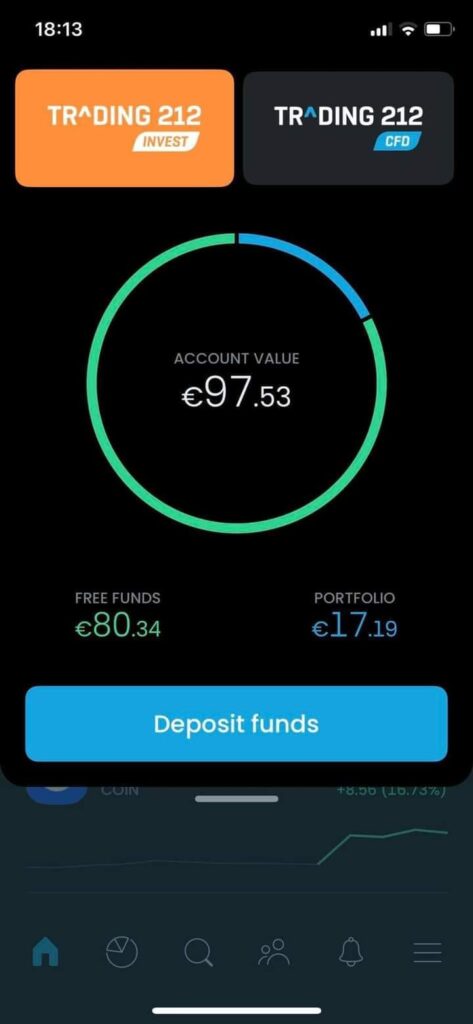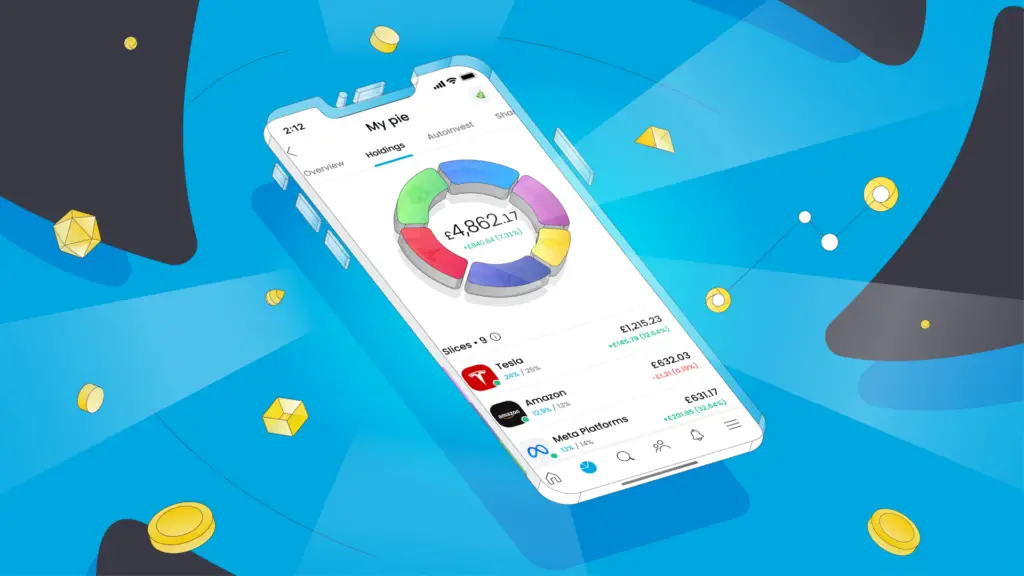Trading 212, a prominent online brokerage platform, has garnered significant attention in the financial world.
Established in 2004 and headquartered in London, Trading 212 offers users the ability to trade a wide array of financial assets, including stocks, ETFs, forex, and indices.
This blog post aims to dissect how Trading 212 generates its revenue, understanding its cost structure, and exploring its market maker model.
History of Trading 212
Early Beginnings
Trading 212’s journey began in 2004 when it was founded by Ivan Ashminov and Borislav Nedialkov.
Originally named Avus Capital, the company started as a forex-trading platform, operating out of a garage.
This humble beginning marked the inception of what would become a key player in the online trading industry.
Gaining Traction and Expansion
The company’s first major regulatory approval came in 2011 from Bulgaria’s Financial Services Commission, enabling it to execute orders independently.
In 2012, Trading 212 made a significant move towards mobile trading, launching its first application for iPhone users, followed by a browser extension.
This adaptation to mobile technology was a crucial step in making trading more accessible to a broader audience.
Entering the UK Market
The United Kingdom, often seen as the hub of FinTech innovation in Europe, was the next destination for Trading 212’s expansion.
In 2014, the company, through Avus Capital, received regulation from UK authorities and established an office in London.
This period marked a substantial growth phase, with the user base expanding significantly.
Innovating the Trading Experience
In 2016, Trading 212 ventured into the US market with Tradebird, a social news platform for financial markets.
The following year, it disrupted the UK stock trading market by introducing zero commission share trading, a pioneering move at the time.
The company also expanded its product offerings to include cryptocurrencies via CFDs.
Overcoming Challenges
Despite its successes, Trading 212 faced challenges, notably in 2017 with issues surrounding Bitcoin trading halts and later, in 2021, with the suspension of meme stock trading.
These incidents underscored the complexities of operating in the rapidly evolving online trading sector.
Present Day and Future Outlook
Today, Trading 212 has grown into a global presence, with a diverse workforce and operations in various countries.
The company’s adaptability and innovative approaches have allowed it to remain a significant player in the online brokerage space.
Revenue Streams of Trading 212
1. Spreads
Trading 212 primarily earns through spreads, which are the differences between the buy and sell prices of financial assets. This is a common revenue model for online brokerages.
2. Stock Lending
The platform also engages in stock lending, where it lends out shares owned by its customers to other institutions in exchange for interest.
This process is secured by US Treasury Bonds held in a third-party account.
3. Overnight and Weekend Fees
For CFD traders, Trading 212 imposes overnight and weekend fees. These fees are charged when a trader holds a position beyond the trading day or over the weekend, reflecting the cost of maintaining the position.
4. Currency Conversion Fees
Introduced in 2021, currency conversion fees are applied when users trade in a currency different from their account’s default currency. These fees are competitive compared to other UK-based online brokerages.
Cost Structure of Trading 212
Trading 212’s cost structure includes various fees, such as charges for trades in different currencies, card deposits, and potential stamp duty for share and ETF purchases.
The platform’s approach to fees is transparent, ensuring users understand the financial implications of their trading activities.
Market Maker Model of Trading 212
Trading 212 operates as a market maker broker, acting as the counterparty to clients’ orders and matching buyers and sellers internally.
This model allows for efficient execution and quick order filling. The platform maintains transparency about its operations and regulatory environment.
Trading Fees and Charges
The platform aims to minimize trading fees, offering commission-free trading on certain assets. However, traders should be aware of overnight fees for CFD positions and potential account funding fees.
How Does Trading 212 Work?

Trading 212 caters to various types of traders, from beginners to experienced investors, offering an accessible and comprehensive trading experience.
Key Features of Trading 212
1. Diverse Financial Instruments
Users can trade in a variety of financial assets, including stocks, ETFs, forex, indices, and more.
The platform offers over 12,000 stocks and ETFs, and it allows trading in commodities like oil, precious metals, and agricultural products.
Indices from various global markets are also available for trading.
2. Three Distinct Products
- Invest: This allows commission-free trading in stocks and ETFs.
- CFD: Users can trade Contracts for Difference (CFDs) on various assets. CFD trading involves betting on the price movement of financial assets.
- ISA: A tax-sheltered account where users can invest in stocks and ETFs with tax-free gains and dividends.
3. Accessible Trading Platforms
Trading 212 is accessible through its website and mobile applications (available on Android and iOS devices).
The interface is user-friendly, making it easy for traders of all levels to navigate and execute trades.
4. Fractional Shares and AutoInvest
The platform offers the option to invest in fractional shares, allowing users to buy a portion of a stock.
Additionally, the AutoInvest feature enables setting up investment goals and automated investing based on these goals.
Trading Mechanics on Trading 212
1. Account Setup and Verification
Users need to create an account and undergo a verification process to start trading. This involves providing personal information and meeting regulatory requirements.
2. Depositing Funds
Various deposit methods are available, including bank transfers, credit/debit cards, and electronic wallets.
There are no deposit fees for amounts up to £2,000, after which a fee applies.
3. Choosing and Executing Trades
Traders select financial instruments and execute buy or sell orders. The platform provides tools for setting up trade parameters like quantity and profit/loss limits.
4. Managing Positions
Trading 212 allows users to manage their open positions, providing real-time information on performance and the option to modify or close trades as needed.
5. Educational Resources and Tools
The platform offers a range of educational materials, including tutorials, guides, and a demo account for practice trading.
Regulatory Compliance and Security
Trading 212 is authorized and regulated by the Financial Conduct Authority (FCA) and adheres to strict regulatory standards. Funds are kept in segregated accounts for added security.
Trading 212 Funding, Revenue & Valuation

Trading 212 has experienced significant growth and changes in its funding, revenue generation, and valuation over the years.
Here’s an overview of these aspects:
Funding and Capital Infusion
Trading 212 secured £13.75 million in funding in August 2021. This funding round was led by its co-founders Borislav Nedialkov and Ivan Ashminov.
Additionally, the company had raised £2 million in August 2020 and a further £6 million from the shareholders earlier in 2021. This brought the total funding raised by the company in 2021 to £19.75 million.
The company increased the share capital of its UK entity by £19.8 million and bolstered its cash reserves by over £90 million.
These moves were part of a strategic investment in the company’s operating model and infrastructure.
Revenue and Profit Trends
Trading 212 witnessed a dramatic surge in its financial performance during the pandemic. Its revenue skyrocketed to £124 million in 2020 from £30 million in 2019.
The net profit also saw a significant increase, growing from £7 million to £73 million in three years.
The company reported total revenue of £138.7 million for the 2021 financial year, an 11.2% increase year-over-year.
Pre-tax profits for the same year were reported at £86 million, which was a 473 percent increase compared to the previous year.
However, the company experienced a revenue drop of 17% in 2022, and its profits fell by more than 50%. This decline followed a period of exceptional growth and necessitated a pause in client onboarding and a review of the firm’s strategy and operating model.
Valuation and Business Growth
Trading 212’s phenomenal growth was driven by broader market trends, its popular platform and product offerings, including its zero-commission pricing structure and mobile app usage.
These features attracted a diverse client base, significantly increasing transaction volumes and customer deposits.
The company’s growth strategy, particularly in enhancing its UK business, included significant investments in senior management, increased headcount, and enhanced oversight over outsourced functions.
Overall, Trading 212’s journey reflects a dynamic and evolving landscape in online trading, marked by rapid growth, strategic funding, and a commitment to improving its service offerings and operational efficiency.
Conclusion
Trading 212 offers a user-friendly platform with diverse investment options, including commission-free trading on select assets. While providing valuable services, it’s important for traders to be aware of the potential risks, especially in CFD trading and the forex market.

